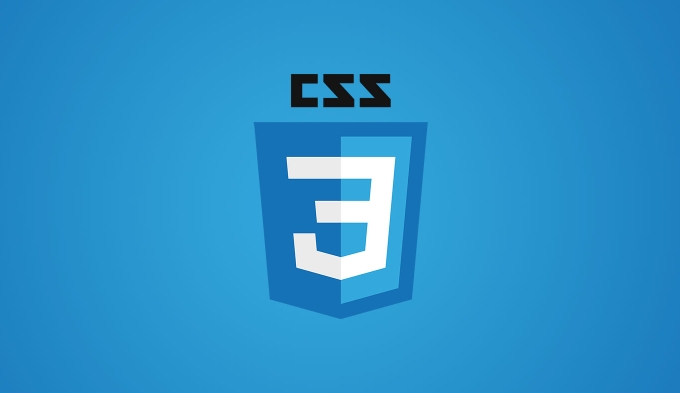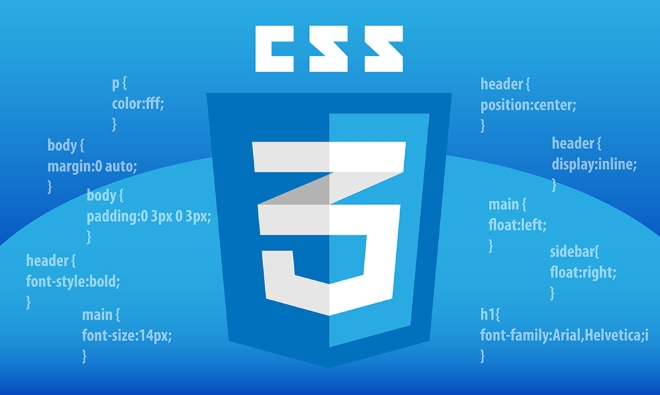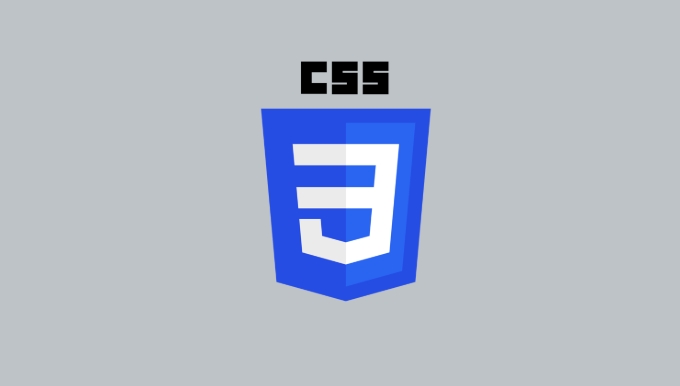A Flex container is a layout container created by setting display: flex or inline-flex. 1. Set the display attribute to flex or inline-flex to create a Flex container; 2. The direct child elements of the container automatically become Flex children; 3. The default child elements are arranged horizontally without manually setting inline-block or floating; 4. The spindle is default to horizontal, and the cross axis is default to vertical; 5. The spindle direction can be changed through flex-direction; 6. Use justify-content to control the spindle alignment; 7. Use align-items to control the cross axis alignment; 8. Use flex-grow, flex-shrink and flex-basis to control the expansion and scaling behavior of the child. After mastering these core concepts, you can efficiently implement responsive layout.

Flexbox is a modern web layout method. Its core idea is to enable the child elements in the container to flexibly scale, align and distribute the space, making it easier to achieve responsive and dynamic layout effects. It is particularly suitable for one-dimensional layouts (such as horizontal or vertical arrangements) and is one of the most commonly used layout tools in front-end development.

What is a Flex container?
When you set display: flex or display: inline-flex on an element, the element becomes a Flex container , and its direct child elements automatically become Flex children (flex items) .
- Simple setup: Just one line of CSS to enable Flex layout
- The default direction is horizontal arrangement (from left to right)
- All child elements will automatically become inline-block-level elements, no longer need to manually set
inline-blockor float.
For example:

.container {
display: flex;
} In this way, all the child elements in .container will be arranged in a row.
Spindle and cross axis: The core concept of Flex layout
The Flex layout has two core axes:

- Main axis : The default is horizontal direction (left → right)
- Cross axis : perpendicular to the main axis, default is vertical (top → bottom)
Understanding these two axes is the key to using Flexbox, because many properties control the arrangement and alignment of elements around these two axes.
You can change the direction of the spindle by using the following properties:
-
flex-direction: row(default, left to right) -
flex-direction: row-reverse(from right to left) -
flex-direction: column(from top to bottom) -
flex-direction: column-reverse(from bottom to top)
How to align Flex children?
Flexbox provides a variety of alignments that allow easy control of the position of children on the main axis and cross axis.
Align on the spindle:
Use justify-content property:
-
flex-start(default, left-aligned) -
flex-end(right-aligned) -
center(center) -
space-between(both ends aligned, the middle space is equal) -
space-around(There is the same space around each child)
Align on cross axis:
Use align-items property (for the entire container):
-
stretch(default value, child items are stretched to fill the container) -
flex-start(top alignment) -
flex-end(bottom aligned) -
center(vertical center)
You can also control the vertical alignment of a child separately, using align-self property.
How to scale the Flex child?
One of the most powerful features of Flex is that it allows children to automatically resize based on available space.
It mainly relies on two attributes:
-
flex-grow: defines the magnification ratio of the child item (default is 0, not magnification) -
flex-shrink: defines the scale-down of the child (default is 1, which can be reduced)
For example:
.item1 {
flex-grow: 1;
}
.item2 {
flex-grow: 2;
} In this case, if the container has extra space, .item2 會占據(jù)twice the space of .item1`.
There is also an abbreviation attribute flex , which can set grow, shrink and basis at the same time:
flex: <grow> <shrink> <basis>;
Basically that's it. Flexbox is not complicated, but it is very practical, especially when dealing with scenarios such as navigation bar, card layout, button group, etc., which can greatly improve development efficiency. Master the concepts of spindles and cross-axis, combined with common alignment and scaling properties, you can easily meet most layout needs.
The above is the detailed content of Describe the Flexbox layout model. For more information, please follow other related articles on the PHP Chinese website!

Hot AI Tools

Undress AI Tool
Undress images for free

Undresser.AI Undress
AI-powered app for creating realistic nude photos

AI Clothes Remover
Online AI tool for removing clothes from photos.

Clothoff.io
AI clothes remover

Video Face Swap
Swap faces in any video effortlessly with our completely free AI face swap tool!

Hot Article

Hot Tools

Notepad++7.3.1
Easy-to-use and free code editor

SublimeText3 Chinese version
Chinese version, very easy to use

Zend Studio 13.0.1
Powerful PHP integrated development environment

Dreamweaver CS6
Visual web development tools

SublimeText3 Mac version
God-level code editing software (SublimeText3)
 How to handle transactions in Java with JDBC?
Aug 02, 2025 pm 12:29 PM
How to handle transactions in Java with JDBC?
Aug 02, 2025 pm 12:29 PM
To correctly handle JDBC transactions, you must first turn off the automatic commit mode, then perform multiple operations, and finally commit or rollback according to the results; 1. Call conn.setAutoCommit(false) to start the transaction; 2. Execute multiple SQL operations, such as INSERT and UPDATE; 3. Call conn.commit() if all operations are successful, and call conn.rollback() if an exception occurs to ensure data consistency; at the same time, try-with-resources should be used to manage resources, properly handle exceptions and close connections to avoid connection leakage; in addition, it is recommended to use connection pools and set save points to achieve partial rollback, and keep transactions as short as possible to improve performance.
 Python for Data Engineering ETL
Aug 02, 2025 am 08:48 AM
Python for Data Engineering ETL
Aug 02, 2025 am 08:48 AM
Python is an efficient tool to implement ETL processes. 1. Data extraction: Data can be extracted from databases, APIs, files and other sources through pandas, sqlalchemy, requests and other libraries; 2. Data conversion: Use pandas for cleaning, type conversion, association, aggregation and other operations to ensure data quality and optimize performance; 3. Data loading: Use pandas' to_sql method or cloud platform SDK to write data to the target system, pay attention to writing methods and batch processing; 4. Tool recommendations: Airflow, Dagster, Prefect are used for process scheduling and management, combining log alarms and virtual environments to improve stability and maintainability.
 How to work with Calendar in Java?
Aug 02, 2025 am 02:38 AM
How to work with Calendar in Java?
Aug 02, 2025 am 02:38 AM
Use classes in the java.time package to replace the old Date and Calendar classes; 2. Get the current date and time through LocalDate, LocalDateTime and LocalTime; 3. Create a specific date and time using the of() method; 4. Use the plus/minus method to immutably increase and decrease the time; 5. Use ZonedDateTime and ZoneId to process the time zone; 6. Format and parse date strings through DateTimeFormatter; 7. Use Instant to be compatible with the old date types when necessary; date processing in modern Java should give priority to using java.timeAPI, which provides clear, immutable and linear
 Comparing Java Frameworks: Spring Boot vs Quarkus vs Micronaut
Aug 04, 2025 pm 12:48 PM
Comparing Java Frameworks: Spring Boot vs Quarkus vs Micronaut
Aug 04, 2025 pm 12:48 PM
Pre-formanceTartuptimeMoryusage, Quarkusandmicronautleadduetocompile-Timeprocessingandgraalvsupport, Withquarkusoftenperforminglightbetterine ServerLess scenarios.2.Thyvelopecosyste,
 How does garbage collection work in Java?
Aug 02, 2025 pm 01:55 PM
How does garbage collection work in Java?
Aug 02, 2025 pm 01:55 PM
Java's garbage collection (GC) is a mechanism that automatically manages memory, which reduces the risk of memory leakage by reclaiming unreachable objects. 1.GC judges the accessibility of the object from the root object (such as stack variables, active threads, static fields, etc.), and unreachable objects are marked as garbage. 2. Based on the mark-clearing algorithm, mark all reachable objects and clear unmarked objects. 3. Adopt a generational collection strategy: the new generation (Eden, S0, S1) frequently executes MinorGC; the elderly performs less but takes longer to perform MajorGC; Metaspace stores class metadata. 4. JVM provides a variety of GC devices: SerialGC is suitable for small applications; ParallelGC improves throughput; CMS reduces
 go by example defer statement explained
Aug 02, 2025 am 06:26 AM
go by example defer statement explained
Aug 02, 2025 am 06:26 AM
defer is used to perform specified operations before the function returns, such as cleaning resources; parameters are evaluated immediately when defer, and the functions are executed in the order of last-in-first-out (LIFO); 1. Multiple defers are executed in reverse order of declarations; 2. Commonly used for secure cleaning such as file closing; 3. The named return value can be modified; 4. It will be executed even if panic occurs, suitable for recovery; 5. Avoid abuse of defer in loops to prevent resource leakage; correct use can improve code security and readability.
 Comparing Java Build Tools: Maven vs. Gradle
Aug 03, 2025 pm 01:36 PM
Comparing Java Build Tools: Maven vs. Gradle
Aug 03, 2025 pm 01:36 PM
Gradleisthebetterchoiceformostnewprojectsduetoitssuperiorflexibility,performance,andmoderntoolingsupport.1.Gradle’sGroovy/KotlinDSLismoreconciseandexpressivethanMaven’sverboseXML.2.GradleoutperformsMaveninbuildspeedwithincrementalcompilation,buildcac
 Java Concurrency Utilities: ExecutorService and Fork/Join
Aug 03, 2025 am 01:54 AM
Java Concurrency Utilities: ExecutorService and Fork/Join
Aug 03, 2025 am 01:54 AM
ExecutorService is suitable for asynchronous execution of independent tasks, such as I/O operations or timing tasks, using thread pool to manage concurrency, submit Runnable or Callable tasks through submit, and obtain results with Future. Pay attention to the risk of unbounded queues and explicitly close the thread pool; 2. The Fork/Join framework is designed for split-and-governance CPU-intensive tasks, based on partitioning and controversy methods and work-stealing algorithms, and realizes recursive splitting of tasks through RecursiveTask or RecursiveAction, which is scheduled and executed by ForkJoinPool. It is suitable for large array summation and sorting scenarios. The split threshold should be set reasonably to avoid overhead; 3. Selection basis: Independent






